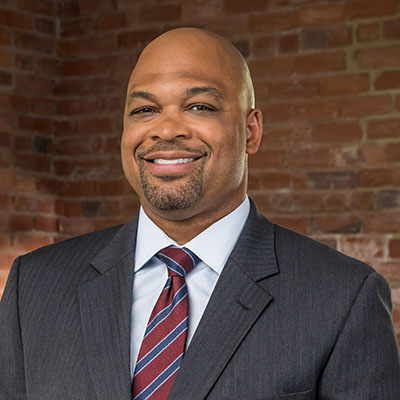The sound of crunching metal, the jolt of impact —a car accident can leave you shaken, injured, and unsure of next steps. Understanding different types of car accidents and potential legal implications can empower you to navigate your situation. If you’ve suffered injuries due to another driver’s negligence, don’t hesitate to contact an experienced Charlottesville car accident attorney right away.
Common types of car accidents
Here are some of the most common types of car accidents seen on roadways across the country:
Rear-end collisions
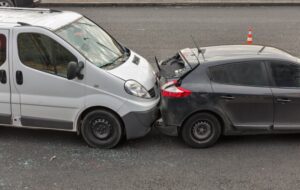
These are among the most common types of car accidents. Common causes include distracted driving, following too closely, and sudden stops.
The danger level of a rear-end collision depends on several factors, including the speed of the vehicles involved, the size and weight of the vehicles, and the use of safety features like seatbelts and airbags.
These accidents can be less severe than other types, such as head-on collisions or rollovers. However, they can still cause significant injuries, especially at higher speeds or if the vehicles involved are large or heavy.
Rear-end accidents often result in whiplash injuries. But they can also cause injuries to the back, head, face, and internal organs.
T-Bone (side-impact) collisions
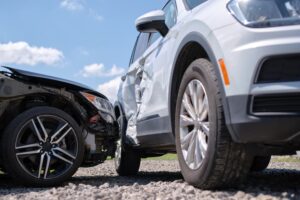
A T-bone accident, also known as a side-impact collision or broadside collision, occurs when the front of one vehicle collides with the side of another vehicle, forming a “T” shape.
These accidents commonly occur at intersections where one vehicle fails to yield the right-of-way, runs a red light or stop sign, or misjudges the timing of a turn. They can also happen in parking lots when drivers back out of parking spaces without checking for oncoming traffic.
T-bone accidents are particularly dangerous due to the limited protection offered by the sides of vehicles. There is also the potential for significant force and intrusion into the passenger compartment. T-bone accident victims can suffer head, chest, abdominal, and lower extremity injuries. There is also a risk of occupants being ejected from the vehicle, which can lead to fatalities.
Head-on collisions
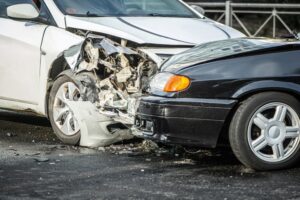
These accidents are considered among the most dangerous and severe types, due to the extreme forces involved. They also have a higher likelihood of resulting in fatalities.
Causes include wrong-way driving, overtaking on two-lane roads, and impaired driving. Injuries in head-on collisions can be catastrophic and may include head trauma, chest injuries, spinal cord injuries, and limb fractures.
Single-vehicle accidents
These accidents can happen for various reasons and may involve a vehicle striking an object, running off the road, or overturning.
Common causes of single-vehicle accidents include driver error, roadway or weather conditions, wildlife obstacles, and mechanical failures.
Injuries vary from mild to severe, depending on speed, the type of impact, the vehicle type, and safety features.
Rollover accidents
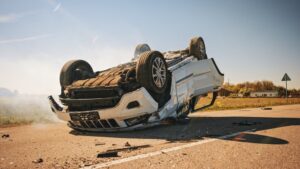
Rollover accidents occur when a vehicle tips over onto its side or roof, often involving multiple rolls. These accidents are known for severe injuries and are considered highly dangerous. They are often associated with SUVs and trucks.
The majority of rollover accidents happen when a vehicle trips over a curb, guardrail, or soft shoulder. Other causes include high-speed turns, evading collisions, or uneven road surfaces.
Rollovers can lead to serious injuries, such as head trauma and spinal injuries. They are also more likely to result in fatalities compared to many other types of accidents due to the risk of ejection from the vehicle.
Multi-vehicle pileups
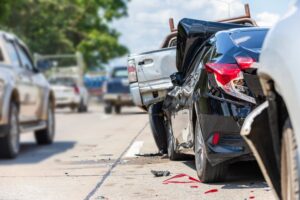
These accidents often happen on highways and are characterized by a chain reaction of vehicles colliding into one another.
Causes of multi-vehicle pileups include reduced visibility, sudden stopping, distracted driving, impaired driving, and poor road conditions.
Multi-vehicle pileups can be extremely dangerous due to the complexity of the accident scene. There’s also the added risk of secondary collisions as vehicles continue to collide with other vehicles or objects. Other issues include exposure to hazardous materials, such as fuel leaks or chemical spills.
Hit-and-run accidents
Hit-and-run accidents occur when a driver involved in a collision leaves the scene without stopping to identify themselves, provide contact information, or offer assistance to others involved. This is both dangerous and illegal.
There are several reasons why someone may hit another car and run, such as if the driver was operating their vehicle recklessly, driving under the influence of drugs or alcohol, having no insurance, or operating without a driver’s license.
These accidents can result in a variety of injuries. However, accident victims are also at risk of not receiving timely medical attention, which can potentially exacerbate their injuries and reduce their chances of recovery.
Why is it important to understand the types of car accidents?
Knowing accident types aids in injury awareness, ensuring that those involved in accidents seek prompt medical attention and comprehend the potential severity of their injuries.
For legal purposes, it enables individuals to navigate fault and liability in different scenarios. This safeguards drivers’ legal rights and facilitates the pursuit of compensation for injuries caused by another driver’s negligence.
When processing insurance claims, companies take into account accident circumstances. Therefore, knowing the type of accident and its contributing factors helps to provide precise information, streamlining the claims process. This knowledge also promotes effective communication with lawyers if legal representation becomes necessary.
Finally, public awareness campaigns can benefit from educating the public about common accident types and their causes. Such efforts promote safer driving habits and contribute to reducing the overall number of accidents on the road.
Steps to take after a car accident
The actions you take following a car accident can help ensure your safety and also strengthen your claim, should you decide to seek compensation from the at-fault party through an insurance claim or a car accident lawsuit.
The steps are as follows:
- Check for injuries: First and foremost, check yourself and others for injuries. If anyone is injured, call 911 immediately for medical assistance.
- Move to a safe location: If possible and if it’s safe to do so, move your vehicle out of traffic to prevent further accidents. Turn on hazard lights to alert other drivers.
- Call the police: Contact the police to report the accident, even if it’s a minor one. A police report can be crucial for insurance claims and legal purposes. Provide accurate and complete information to the police when they arrive.
- Be cautious with statements: Avoid admitting fault or making statements that could be used against you later. Stick to the facts when speaking with the police, the other driver(s), and your insurance company.
- Exchange information: Exchange contact and insurance information with the other driver(s) involved. Include names, addresses, phone numbers, insurance company names, and policy numbers. Be polite and cooperative, but avoid discussing fault or blame.
- Gather witness information: If there are witnesses to the accident, obtain their contact information. Their statements may be valuable later.
- Take photos: Use your smartphone or camera to take pictures of the accident scene, vehicle damage, license plates, and any relevant road conditions or signs. Visual evidence can be crucial for insurance claims and legal proceedings.
- Seek medical attention: Even if you don’t believe you’re seriously injured, it’s a good idea to seek medical evaluation after an accident. Some injuries may not be immediately apparent, and a medical record can be valuable for insurance claims and legal matters.
- Document the accident: Write down your account of the accident while it’s fresh in your memory. Include details such as the date, time, weather conditions, road conditions, and what you remember about the events leading up to the accident.
- Notify your insurance company: Report the accident to your insurance company as soon as possible, even if you were not at fault. Follow their instructions for filing a claim, but to ensure your rights are protected, do not give any statements or sign any documents without consulting an attorney.
- Keep records: Maintain all records related to the accident, including medical bills, repair estimates, and correspondence with insurance companies or legal representatives.
- Contact an attorney: If you’re unsure about your rights, liability, or the extent of your injuries, consult with an attorney experienced in personal injury or car accident cases.
Make safety and well-being your top priorities after a car accident. Stay calm, follow these steps, and seek legal advice to protect your rights and ensure a fair resolution to the situation.
Contact a lawyer if you’ve suffered injuries in a car accident
Auto collisions can happen to anyone. However, navigating the legal complexities, insurance claims, and pursuit of fair compensation can be daunting tasks. This is especially true when also dealing with the physical and emotional toll of an accident. Having an experienced car accident lawyer can make a significant difference in your journey toward recovery and justice.
If you or a loved one have been involved in a car accident, regardless of the type, reach out to the compassionate personal injury lawyers at Allen & Allen for a free consultation. Your well-being matters. Call 866-388-1307 today.




